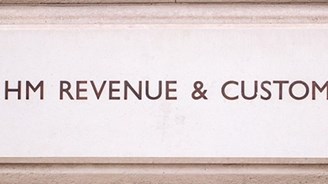Route 102 – One man’s year-long journey……Day 71

To mark this momentous year for UK GAAP, I'm embarking on a mission to work my way through FRS 102, reading a portion on each working day of 2015 and writing a short blog entry on my thoughts and musings (be they few or many).
DAY 71 (26 Jun)
One of the best British sitcoms ever made, in my opinion, is the BBC Radio 4 series Cabin Pressure, which charts the (literal) ups and downs of a very small charter airline, MJN Air, and its four employees. During one episode [MILD SPOILER ALERT], a bird strike forces an emergency landing of MJN's only plane with potentially disastrous consequences for its future. This got me thinking.
Here's a scenario. A small charter airline (similar to MJN with, say, two or three planes of the same type) concludes that, were it to experience a grounded plane through such an eventuality, the resulting down-time could prove very expensive. As a result, it buys a spare engine which is stored in the hangar ready to be wheeled out and bolted on if needed. Although this ties up valuable working capital, the airline's management have concluded that the 'insurance' of having a spare engine is worth the cost.
And here's the question (which I've been posing on CPD courses): How should the airline account for that engine? Is it stock (or, if you insist, 'inventory') or is it a fixed asset? I can report that the response on courses has been a little mixed, but most participants opt for the 'stock' approach. Of course this means that, while the spare engine remains in the hangar, there is no profit and loss effect; but it also means that the day the engine is pressed into service will be an expensive day in P&L terms, as the engine will immediately be expensed in full.
The fixed asset approach avoids this sudden P&L impact. The engine would be depreciated (probably fairly gently, since it's suffering no wear and tear, but it is surely subject to obsolescence over time and so should be written down), resulting in an annual charge to profits. As soon as it is bolted on, the useful life will reduce leading to higher charges in the future.
The relevance of all this to my blog is that para 17.5 confirms that the 'fixed asset' approach should be used for 'major spare parts and stand-by equipment' which the entity expects to use during more than one period. The same is true for spare parts and servicing equipment that can only be used in connection with an item of PPE. By contrast, regular spare parts (by which I mean tubs of nuts and bolts etc) should be carried as inventory and expensed as consumed.
So that's that small topic cleared up, then. And should this post lead to any new Cabin Pressure fans (it really is that good), then my work is done.
P.S. If you missed the last instalment click here



